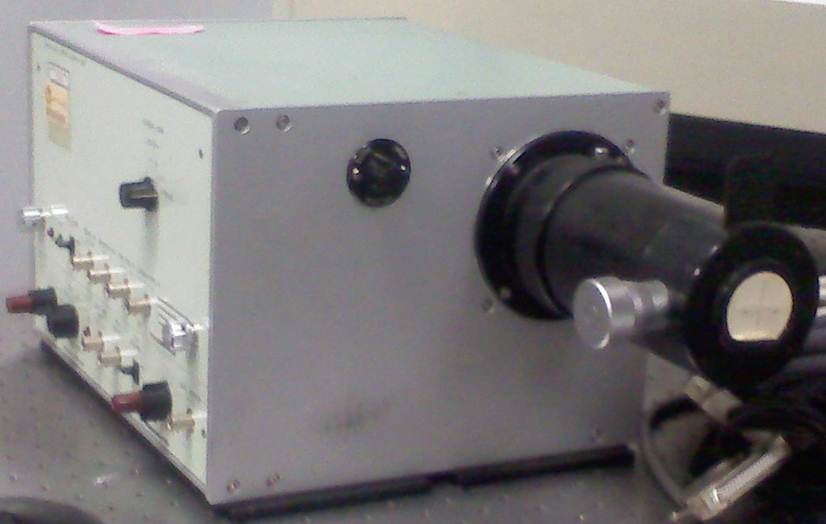The laser system consists of a master and slave (regenerative) cavity to increase stability and power. The master oscillator employees an active-passive modelocking scheme using a flowing saturable absorber dye cell and an electro-optic modulator (Pockels cell) with negative feedback for the passive and active modelocking processes, respectively. This allows for a quasi-stationary operation in the cavity, which produces a very stable pulse (pulse width: ± 1.0 %, pulse energy: ± 1.5%). Once this quasi-stationary condition is reached the pulse is switched by a Pockels cell and polarizer, into a high Q regenerative amplifier cavity. This is done primarily so the pulse energy can be built up without degrading the saturable absorber dye quickly, which helps in the long term stability of the laser. A third Pockels cell and polarizer is used as a cavity dumper to switch out a single pulse that has energy of approximately 500 μJ. This pulse, after being spatially filtered, is sent through a double pass amplifier. The polarization of the input beam is rotated by 90 degrees between passes to extract the maximum amount of energy. The maximum energy pulse after this amplification stage is 50 mJs. The energy can be easily varied from 500 µJ to the maximum of 50 mJ by adjusting the time delay between the triggering of the oscillator and the amplifier flashlamps. After the amplifier are two KD*P crystals for frequency generation, the first crystal for second harmonic generation (SHG) and the second for third harmonic generation (THG). Dichroic beamsplitters are located before, between, and after the crystals to separate out the fundamental, SHG, and THG beams respectively. The THG beam, which has a maximum energy of ≈ 12 mJ, is used to pump an OPG.

- EKSPLA PL 2143 Specs
- Pulse Energy: 110 mJ
- Pulse Width: 25 ps
- Maximum Average Power: 1.1 W
- TBWP: close to transform limited
- Repetition Rate: 10 Hz
- Polarization: Linear, horizontal
- vEnergy Stability: < 1% rms
- Beam Diameter: 9 mm ± 1 mm
- Transverse Mode: TEM00
Ekspla
The M1952 high speed streak sweep unit from Hamamatsu is exclusive to the C1587 Temporal Disperser also from Hamamatsu. On the fastest sweep range of the M1952, the C1587 can offer a time resolution of 2 ps for ultrafast kinetics experiments.

- Streak Sweep Time: 300 ps, 1 ns, 2 ns, 5 ns, and 10 ns/15mm
- Streak Sweep Speed: 50, 15, 7.5, 3, 1.5 mm/ns
- Maximum Sweep Repetition Frequency: 1 kHz
- Trigger jitter: Less than ± 20 ps
- Streak Trigger Delay Time: Typ. 20 ns
- Time Resolution: Better than 2 ps
- Dynamic Range: 1 : 30
- Gate Open Time: 300 ns – 1 ms
- Spectral Response: 200 – 850 nm
- Light gain: Approx. 3000
- Image magnification: 1 : 2.3
Hamamatsu

